Contact Vicki
If you have any questions or would just like more information please don't hesitate to get in touch by clicking the button below and filling out the contact form.
Contact Vicki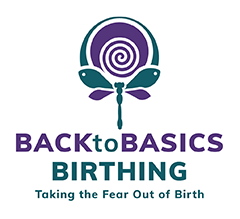
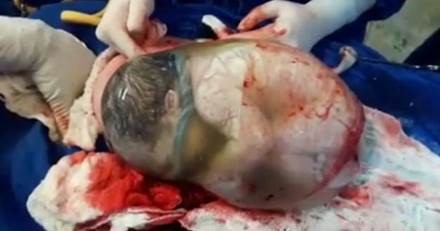
We have several Hypnobirthing couples who have given us permission to use their birth videos or photos in our classes for training purposes. In a discussion we had not long ago in our practitioner group we have noticed quite a few hypnobirthing babies being born “en caul” or “in the caul.”
Being born en caul means that your baby is born with the amniotic sac still intact – meaning your membranes have not broken or released, hence the term “waters breaking.”
Occasionally parts of the sac can become stuck on or around the baby’s head and face at birth, which resembles a helmet and this is where the word “caul” comes from as it is Latin for helmet. A “caul birth” is where the sac forms like a veil over the head or face at birth, but an “en caul” birth means the baby is born in the amniotic sac.
We don’t know for sure, but it may be because these mums are having a physiological birth, rather than being induced and managed. They have learnt relaxation techniques and are releasing stress and fear so they are calmer during birth, while also experiencing a natural expulsive reflex, rather than forced pushing.
It was interesting that even one of the dads in my Hypnobirthing classes commented that so many of our birthing videos we show in the classes showed babies being born “en caul” when he was aware that this was a rare event.
But is it really as rare as we are led to believe?
If you were to Google to find out what the statistics are with en caul births, there are many reports that state that this occurs on average around 1 in 80,000 births.
However, speaking to midwives, en caul birth is fairly common during a physiological birth, especially water births and is more likely to be around 1 in 20.
It is more rare in a caesarean birth because the scalpel normally cuts through the amniotic sac.
Here is a News.com.au video of a baby born “en caul” that went viral in 2015. This was an emergency caesarean birth, and the baby was born three months premature and was receiving oxygen and nutrients from the placenta via the umbilical cord. The photo above shows the surgeon has removed the entire sac with the baby inside, but the placenta is still in the uterus and is out of view. This is not how a physiological en caul birth would look like.
The video footage shows a good close-up of the baby still inside the sac after the birth (but not the actual caesarean for those who are squeamish).
Today that baby is a healthy young child and the mum is amazed that her baby’s birth caused such a stir in world news because it is so rare.
Some old wives’ tales during medieval times was that a baby born in the caul were believed to have special powers and would become gifted with psychic abilities. In other parts of the world it was believed they would have lifelong luck and abundance or become leaders. Women who birthed babies en caul would sell the membranes after birth to sailors as it was believed that the caul would protect them from evil spirits while out at sea and also prevent drowning.
So what actually happens when a baby is born en caul?
Rachel Reed from Midwife Thinking gave me a good explanation of what happens:
“There are two sacs – one is the amnion, which is the inner sac directly around the baby, and the other is the chorion, which is the outer sac that is next to the uterine wall. Towards the end of pregnancy the baby is surrounded by 500 – 1000mls of fluid. This is mostly made up of urine and respiratory tract secretions produced and excreted by the baby. There is around 200mls of amniotic fluid and mucous between the amnion and the chorion, so they are not fused together, but after the birth the two layers stick together because the fluid has gone, but it is still possible to separate the two layers (see photos below). With contractions during labour, the amniotic sac (both membrane layers) bulges and stretches out of the vagina, just like it does through the cervix during labour but it just stretches further, so as the baby is born, the sac is still around the baby.
With a non-surgical encaul birth the amniotic sac would burst as the baby is born, usually as the shoulders come through, sometimes leaving the baby wearing bits of it on their head.”
Rachel Reed from Midwife Thinking has a full blog about the amniotic sac if you want to read more:

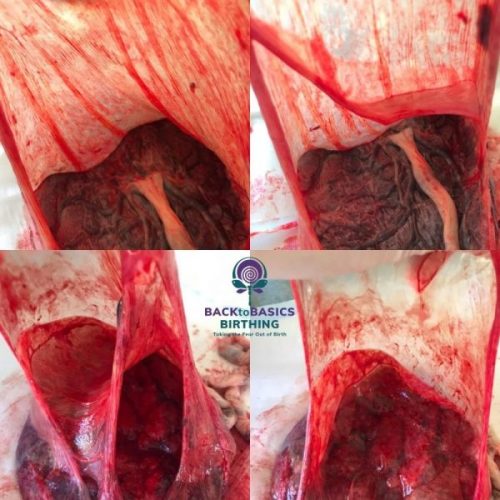
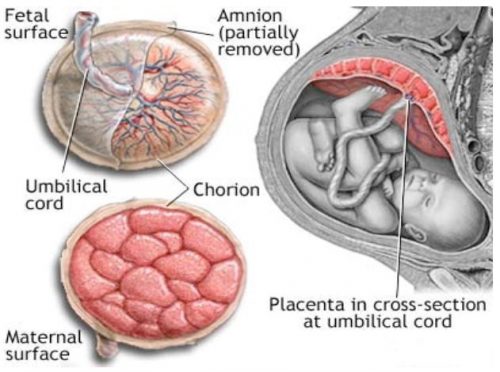
Here is a photo showing a placenta after birth, with the amniotic sac, and the umbilical cord still attached to the placenta inside the sac.
The baby would have been safely and snuggly inside that space that is being held up, and connected to the umbilical cord, while surrounded and protected by the sac like a big bubble, and this would also be holding the amniotic fluid around the baby.
The placenta (the red meaty part laying on the silver tray) would be attached to the uterus and that is called the maternal side, while the side where the umbilical cord attaches is called the foetal side.
Want to read more about placenta’s?
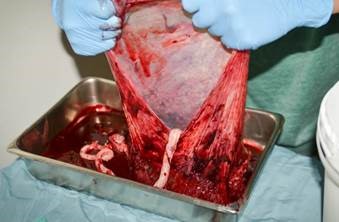
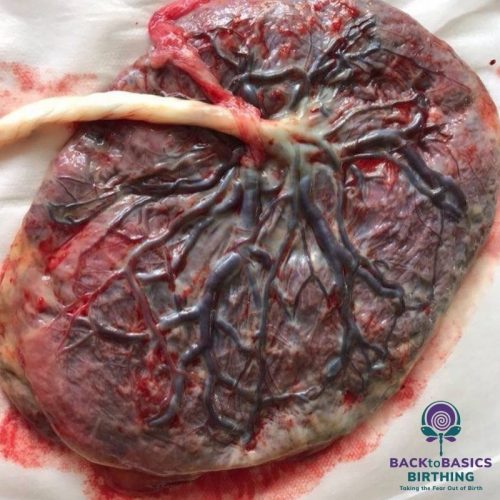
With placenta encapsulation, I had been removing the amniotic sac and discarding it as I was taught that it does not have any benefit in the encapsulation process, however upon further research I discovered that there is now a Global Amniotic Membrane Market, as researchers have found that the membranes contain anti-inflammatory and anti-angiogenic properties and has been used for burns and wound healing and contains stem cells.
https://clinicalgate.com/placenta-and-extraembryonic-membranes/
Here are some excellent photos of a twin born naturally in the caul.
https://www.ladbible.com/news/news-twin-baby-born-in-amniotic-sac-in-extremely-rare-birth-20201106
For those of you who would like a bit more in-depth information about the placenta and how it works you can check out this excellent video by Rishi Desai at the Khan Academy.
It is so interesting and really provides information in an easy, and visual way so you can learn so much without it being too technical.
I’ve always been fascinated by the placenta, the amniotic fluid and the development of baby from conception.
There are some incredible photos taken by Lemart Nilsson where you can see the amniotic sac, placenta and cord attachment to the placenta and uterus.

To see more of this amazing photography by Lennart Nilsson you can click on this link:
http://doorofperception.com/2014/03/lennart-nilsson-a-child-is-born/
Other resources:
https://clinicalgate.com/placenta-and-extraembryonic-membranes/
http://www.vivo.colostate.edu/hbooks/pathphys/reprod/placenta/structure.html
https://en.wikivet.net/Placenta_-_Anatomy_&_Physiology
If you have any questions or would just like more information please don't hesitate to get in touch by clicking the button below and filling out the contact form.
Contact Vicki